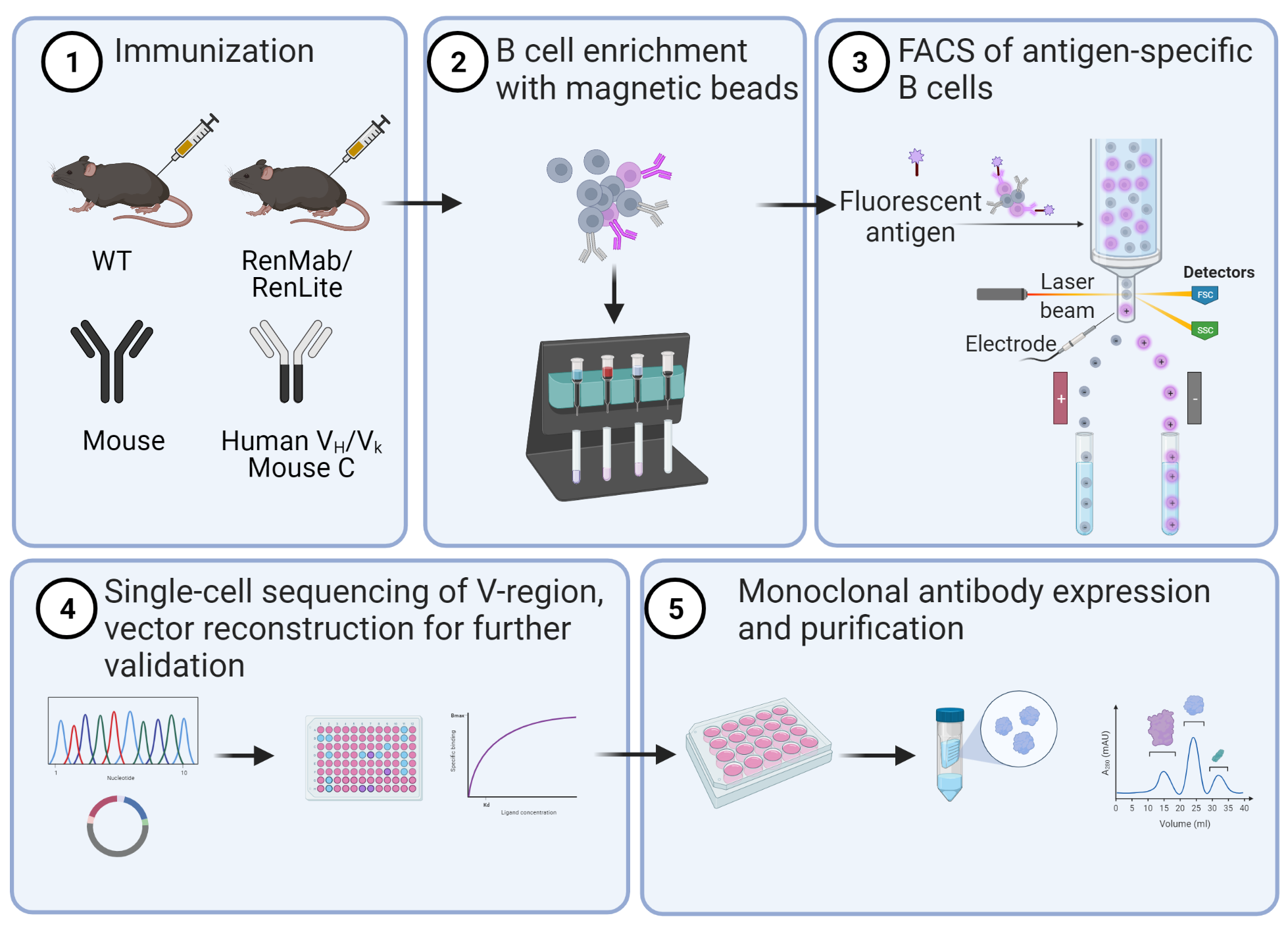Maximum yield of antigen-specific B cells
For antibody discovery, FACS technology can be an additional method to screen a large number of individual B cells for hit generation, allowing for the maximum diversity of clones.
FACS Principles
Fluorescence-activated cell sorting (FACS) technology detects the light-scatter properties of single cells to estimate cell size, granularity, and fluorescent labeling intensity. Once cells are incubated with fluorescently-labeled antibodies targeting surface proteins, populations of interest are assigned a charge and can be isolated for functional assays or genetic analyses. Depending on the capabilities of the instrument, 10 or more unique fluorescent moieties can be used to subfractionate cell suspensions into highly-purified subpopulations. B cell sorting for antibody discovery can benefit from the use of this technology to maximize cell throughput.
Fluorescence-based B cell sorting workflow
In this workflow, B cells are incubated with fluorescently-labeled antigens, and the positive binders are captured for further cloning and identification.
Adapted from “Fluorescence-Activated Cell Sorting”, by BioRender.com (2021). Retrieved from https://app.biorender.com/biorender-templates



